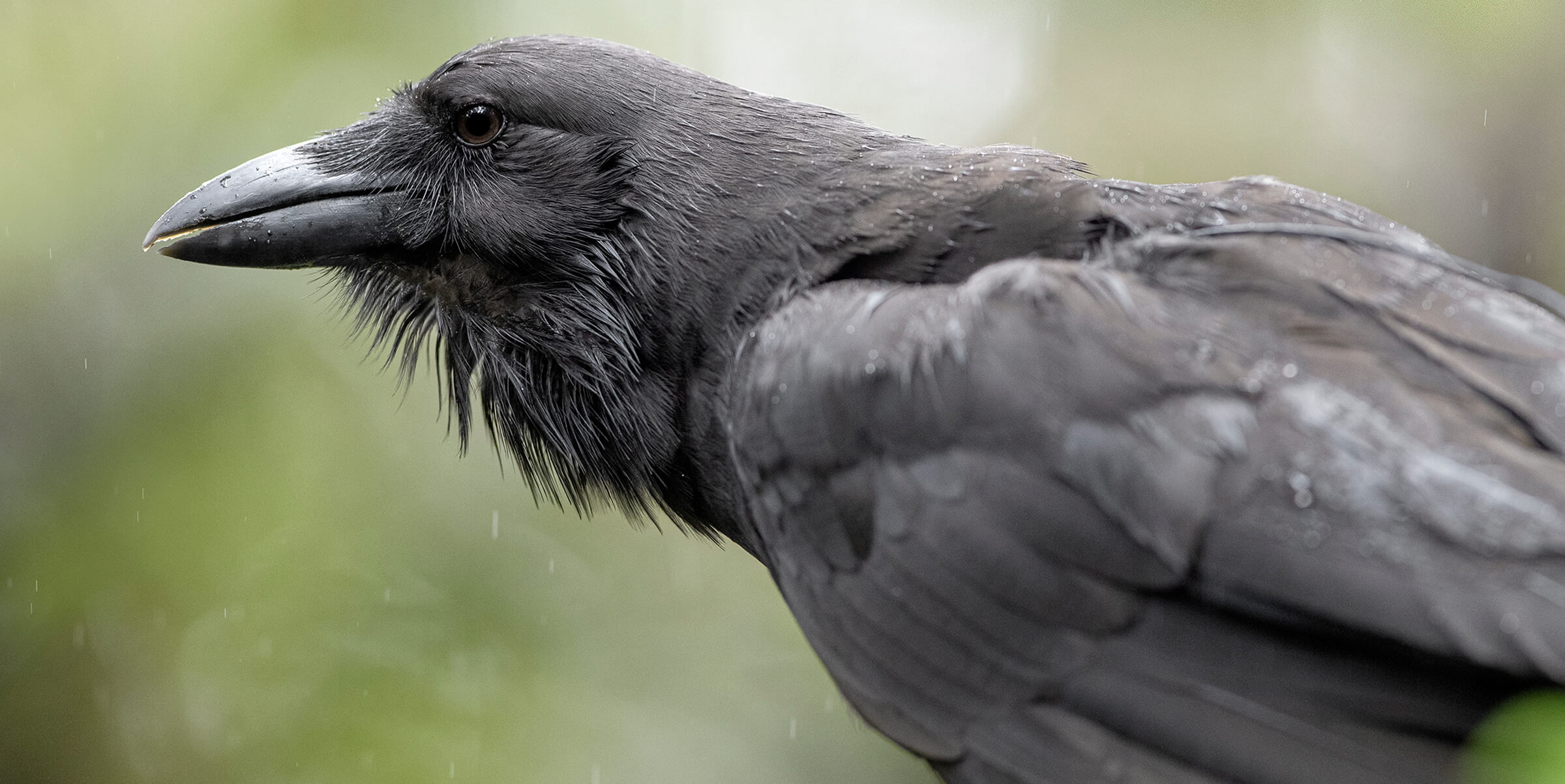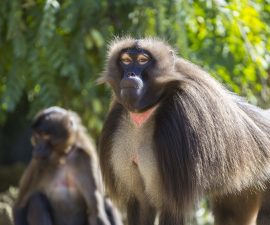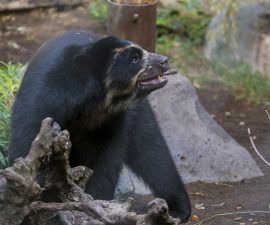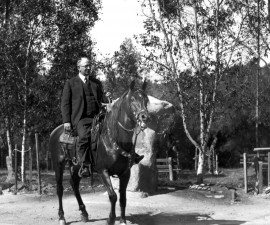BY Wendy Perkins
Photography by Ken Bohn
With voices that gouge the soundscape and behaviors worthy of viral videos, crows, ravens, jays, and magpies make an impression.
They’re bold, curious, and clever—traits that have caught the attention and imagination of humans for millennia, as evidenced by the images early humans made on cave walls. These birds still hold our fascination today; the proof is on the internet, where popular videos abound that show crows, ravens, jays, and magpies…well, frolicking. We see them playing aerial games of keep-away, sliding down snowy roofs (and flapping back to the top for another go) and solving complex puzzles—things humans can relate to. While we find their intelligence entertaining, for the Corvidae family, it’s key to their survival.
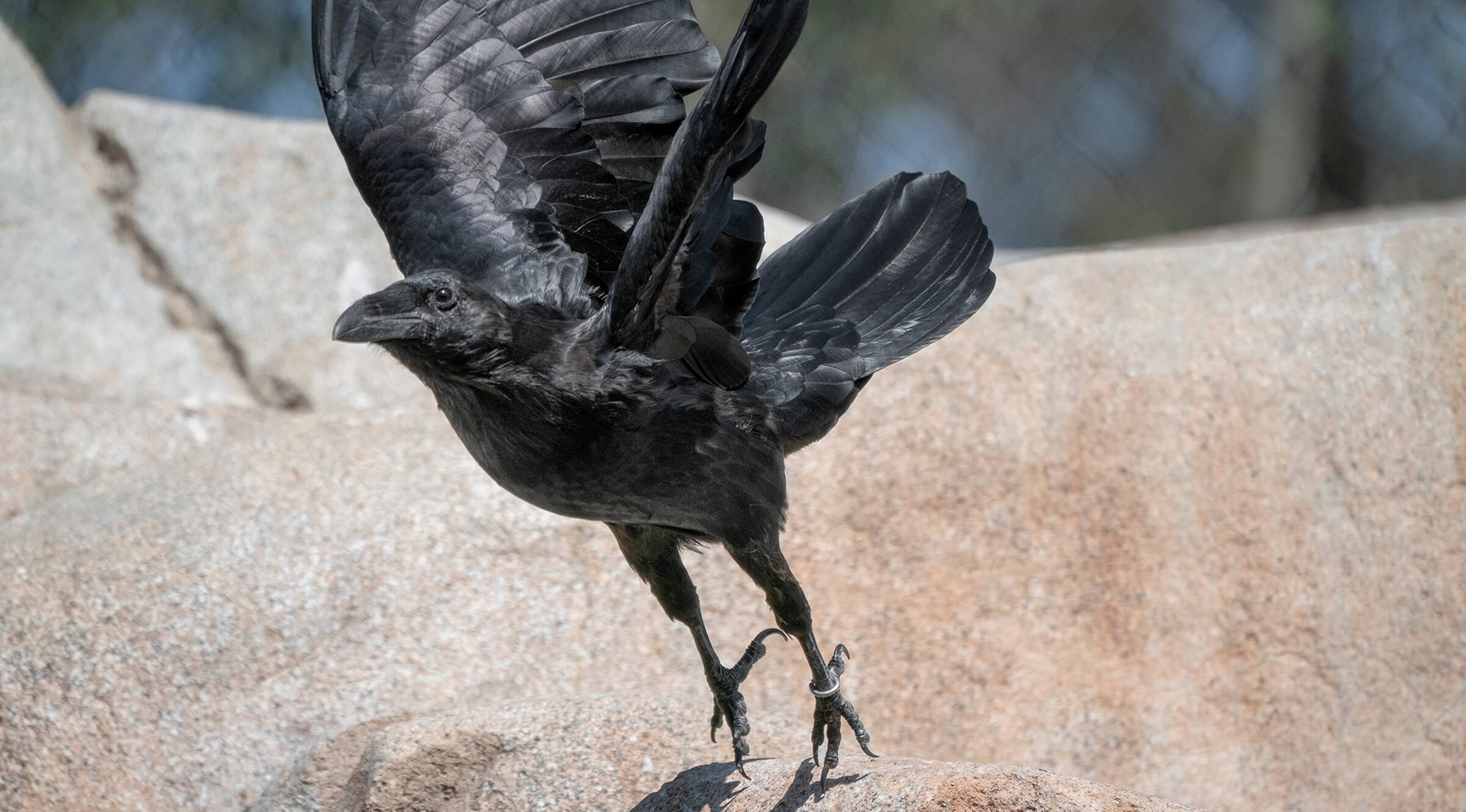
Birds with Brainpower
Nearly cosmopolitan in distribution, there are 130 species of corvids organized by ornithologists into 21 genera. They have a brain larger in relation to their body size than that of most other birds. The inner part of their forebrain is packed with nerve cells that make it an efficient center for storing, processing, and coordinating information—useful for recognizing food locations and flock members. Another well-developed part of the brain, the hippocampus, aids in the bird’s spatial memory: they remember precisely where that prime feeding area is.
Books have been written about the ability of corvids to learn and use insight to solve problems. It is often said that the relative brain size of two of types in particular, ravens and crows, is more like that of primates than of other birds. Those who study and know corvids best sometimes refer to them as “flying monkeys—but not The Wizard of Oz kind,” says Autumn Maize, a senior bird keeper at the San Diego Zoo. She explains that the reference is to how amazingly smart these birds are. “If they had hands,” Autumn says with a chuckle, “they’d be dangerous.”
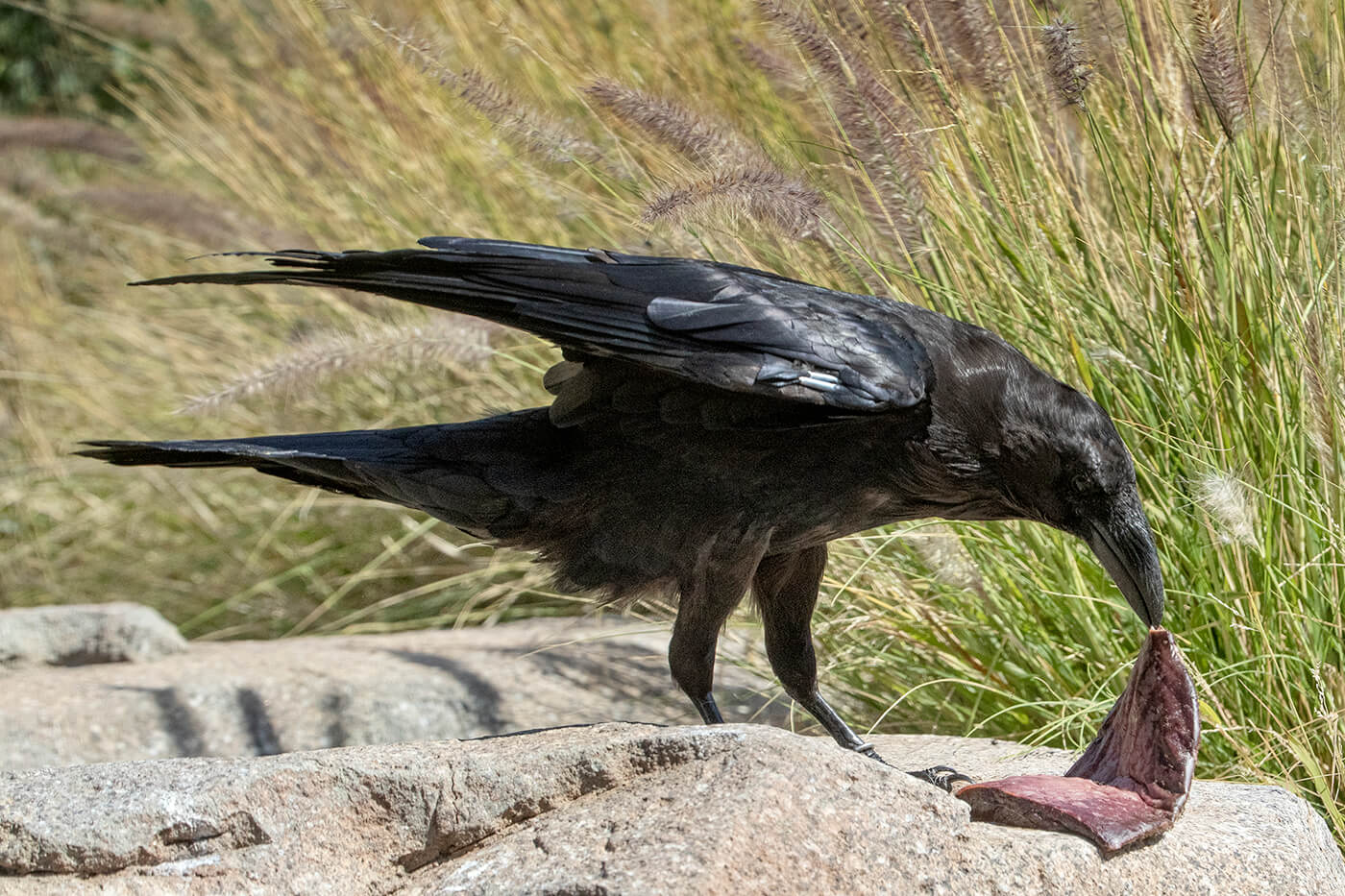
A LITTLE SOMETHING FOR LATER
Luna, the common raven at Elephant Odyssey, is known for swooping in to grab some spleen (a high-value food) to go. She’ll cache some of it for later.
Visitors to the Zoo have a chance to see some of that intelligence in action. Luna, a common raven Corvus corvax, lives with a group of California condors at the Harry and Grace Steele Elephant Odyssey. There, she watches and waits for keepers to put out food, then glides down to snatch some choice bits (usually spleen). Rather than take time to eat, Luna flies to a spot at the top of the exhibit, tucking the “good stuff” in crevices too tight for a condor’s beak. Later, she’ll feast at her leisure. Caching is a common behavior in corvids. Yet, unlike squirrels that famously often forget where they’ve stored food, Luna and her kind have that excellent hippocampus to help them waste not, want not.
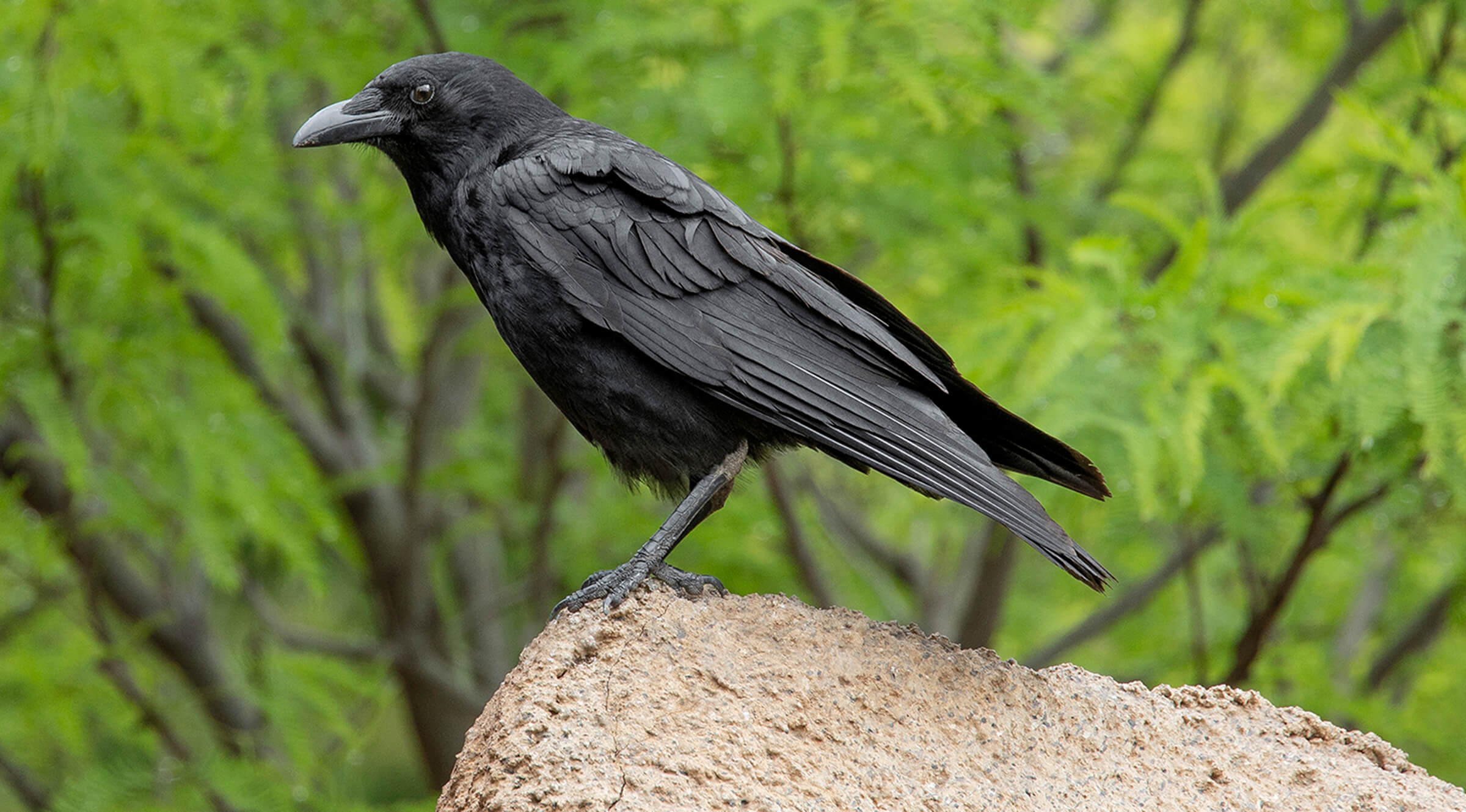
Crow or Raven?
If Luna understood the chatter of guests on the other side of the viewing panel, she might be surprised to hear they can’t decide exactly which type of black bird she is. Given just a quick glance, most people can’t tell the difference between the two. However, the more you look, the more you see. From beak to tail and beyond, here’s how crows and ravens compare.

BEAK
Raven (left): Shorter and thicker
Crow (right): Elongated and thinner
SOUND:
Raven (left): Deep “croak”
Crow (right): Classic “caw”
TAIL:
Raven (left): Wedge-shaped
Crow (right): Rounded
Beyond the first sight and sound, differences come to light as one watches the bird. Crows are usually found in flocks of five or more, while ravens are often seen alone or in small groups of two or three birds. There are dietary differences, as well. Ravens are the more carnivorous, while crows eat an array of things, from grains, berries, and nuts to earthworms, mice, carrion, and even garbage left by humans.
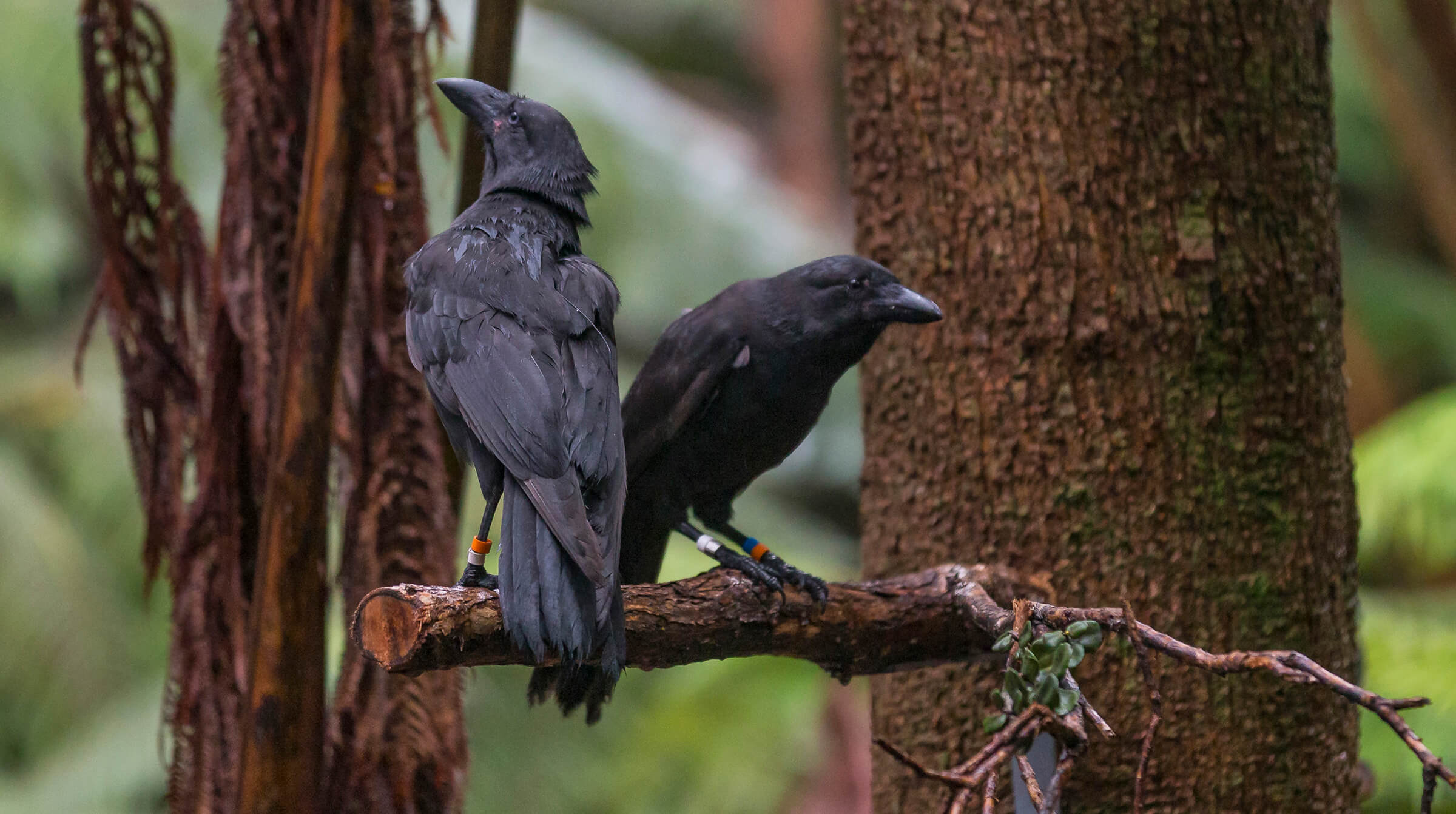
Something to Crow About
There are about 40 species of crows worldwide, and they are often—but not always—common in their range. The Hawaiian crow, or alala, Corvus hawaiiensis (pictured above) is one of the exceptions. At their lowest point, in the 1990s, fewer than 20 alala remained flying and foraging in the forests of the Hawaii’s Big Island. Like crows in other parts of the world, alala are important in Hawaiian culture, regarded and revered as spiritual family guardians. They are vital to their forest habitat, too, distributing seeds that aid biodiversity. As threats increased from disease, habitat loss, and introduced predators (feral cats, mongooses, and rats), their future looked grim. By 2002, the last bird known to still be living in the wild was no longer seen—the species was officially extinct in the wild. Something needed to be done.
At this point, the entire population of alala was in facilities managed by San Diego Zoo Global and the Hawaiian Endangered Bird Conservation Program (HEBCP). These were all birds that had hatched in managed care, so there were also no longer any birds in the breeding facilities that had been brought from the wild. The breeding efforts at the HEBCP were necessary to save this species from complete extinction, and to increase the population to viable levels and help them thrive. By 2015, 114 alala were cawing at HEBCP centers.
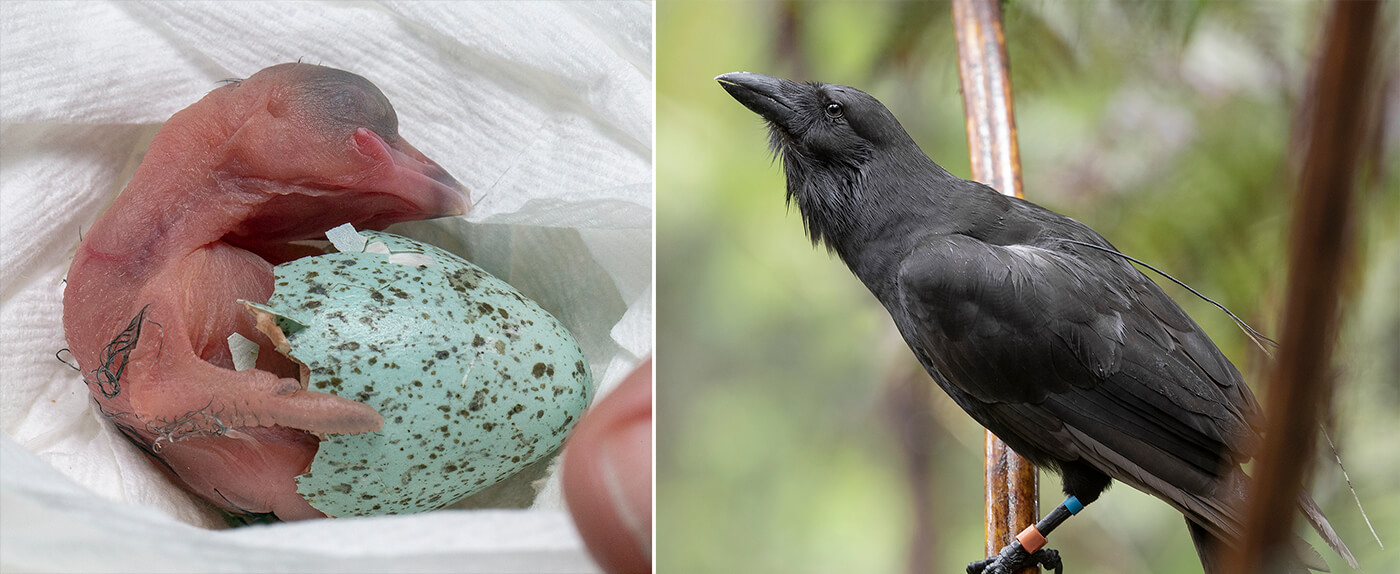
BIRD BY BIRD
After hatching, alala chicks are hand-raised using protocol that keeps them from imprinting on humans, in order to release some into protected native habitat, as has happened with the bird on the right.
In 2017, the HEBCP staff joined the US Fish & Wildlife Service, the State of Hawaii Division of Forestry and Wildlife, and other partners in releasing 11 alala into the Pu’u Maka’ala Natural Area Reserve on the island of Hawaii. They continue to thrive, and the released birds have shown natural nesting and defensive mobbing behaviors—an exciting development!
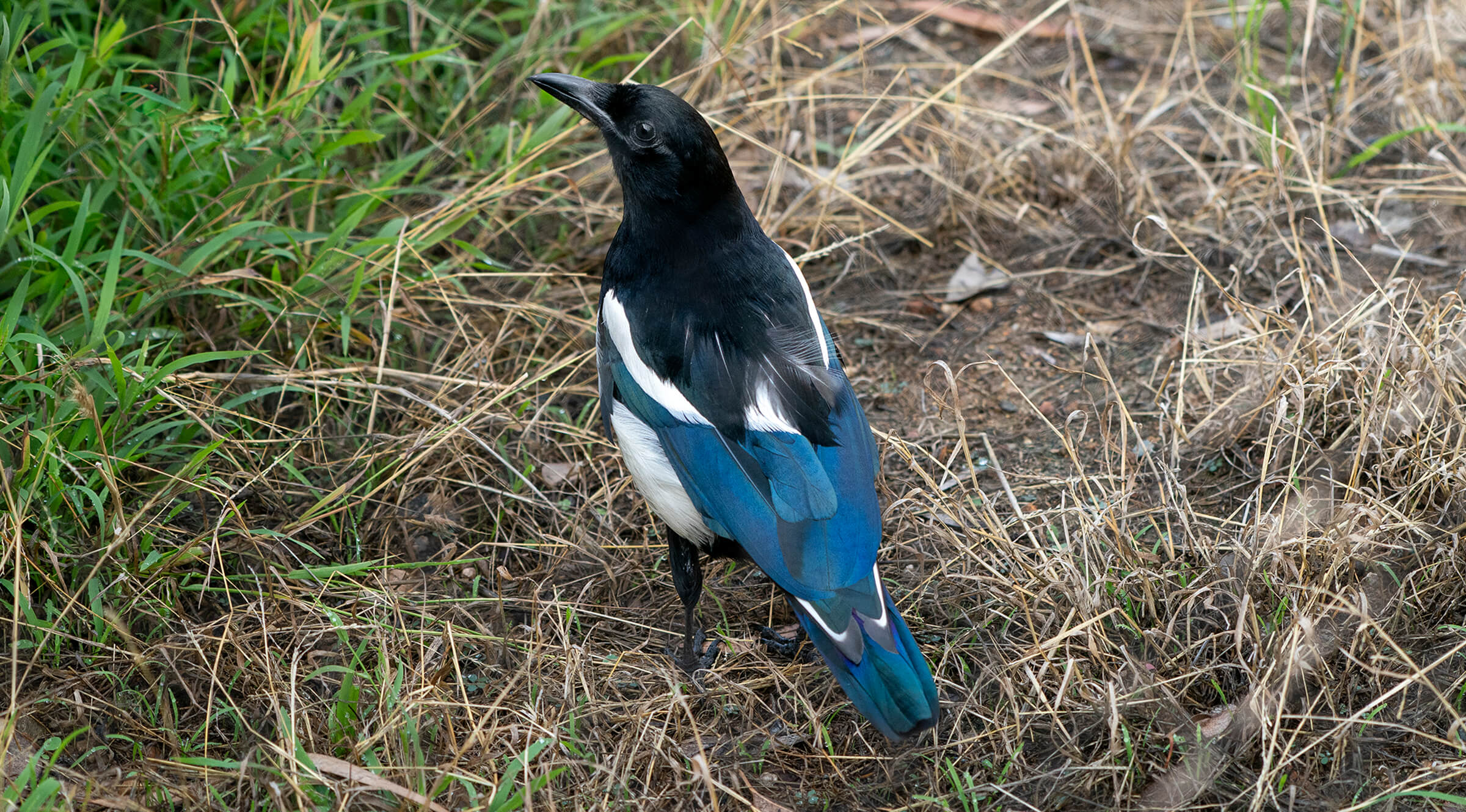
Look Who’s “Talking”
Another corvid in Elephant Odyssey, Rico the black-billed magpie, is popular with Zoo Camp kids and members. He lives with the large and impressive secretary bird, but Rico has caught the ear of many because he talks. Folks in the know will stand by his habitat and say “hello” waiting for him to return the greeting. Sometimes, they walk away without experiencing Rico’s excellent mimic of a human voice. As Autumn explains, “he talks to whom he wants to.”
Autumn shares that Rico used to exchange greetings with her regularly, but “I blew it.” One day, Autumn thought she would capture a video of him talking as she gave him treats. As she held up her phone, Rico stayed silent. The next time she tried, she put the phone in her shirt pocket so he couldn’t see it. Still, Rico wouldn’t make a sound. As she always does, she offered him a treat. He took the tidbit, carefully set it on the ground, and flew to the other side of the exhibit. “Months later, he’s still not talking to me,” Autumn says.
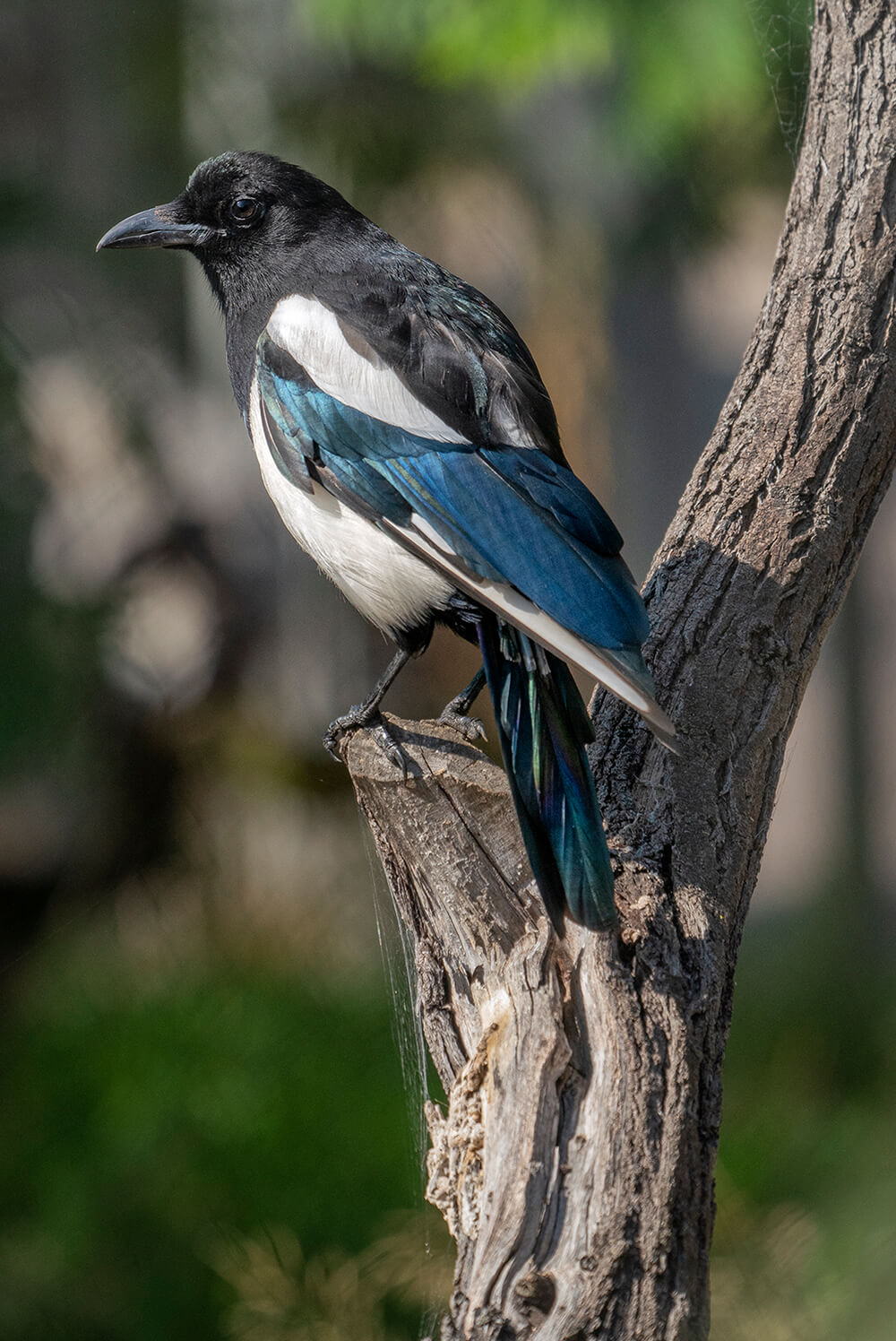
BRIGHT BIRD
Iridescent flashes of blue and green in the wings and tail give Rico a sparkle that matches his personality.
Rico is an excellent ambassador for his kind. One of only two magpie species in North America, black-billed magpies Pica hudsonia are common in open country and around mountain towns. They move about in groups, trilling, cackling, and whistling. This is one of the corvids known for holding “funerals”—a strange behavior that is not well understood. When an individual discovers a dead magpie, the bird begins calling loudly to attract the rest of the flock. The others take up the call as they arrive—imagine a group of about 40 magpies squawking as they gather around the deceased. The commotion may last for 10 to 15 minutes, then the birds fly off silently.
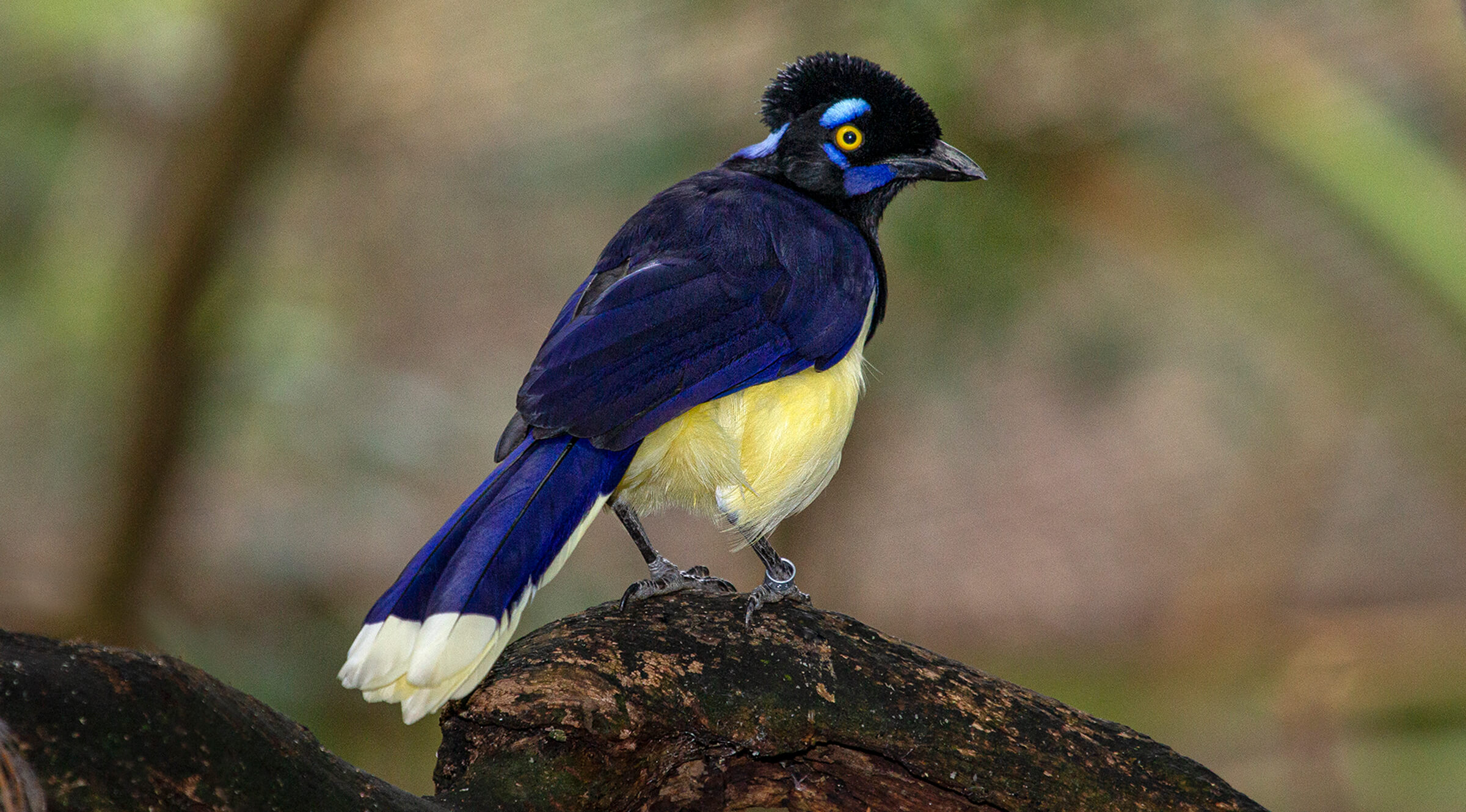
The Jay Way
If you have a keen eye, you’ll discover another corvid as you stroll through the lushly planted Parker Aviary at the Zoo. Watch for flashes of a pale yellow belly, vibrant violet-blue back, and yellow eyes. They belong to our plush-crested jay, J.J.
Named for the velvety-looking crest of feathers on the male’s head, this species is native to forests and woodlands of the southern-central regions in South America. Plush-crested jays Cyanocorax chrysops are as gregarious and lively as their relatives in North America. Hopping among branches and peering under foliage, they forage in groups of 10 to 12 birds. Most of their diet comes from insects and fruit, but like so many other corvids, they also take eggs and nestlings of smaller birds.
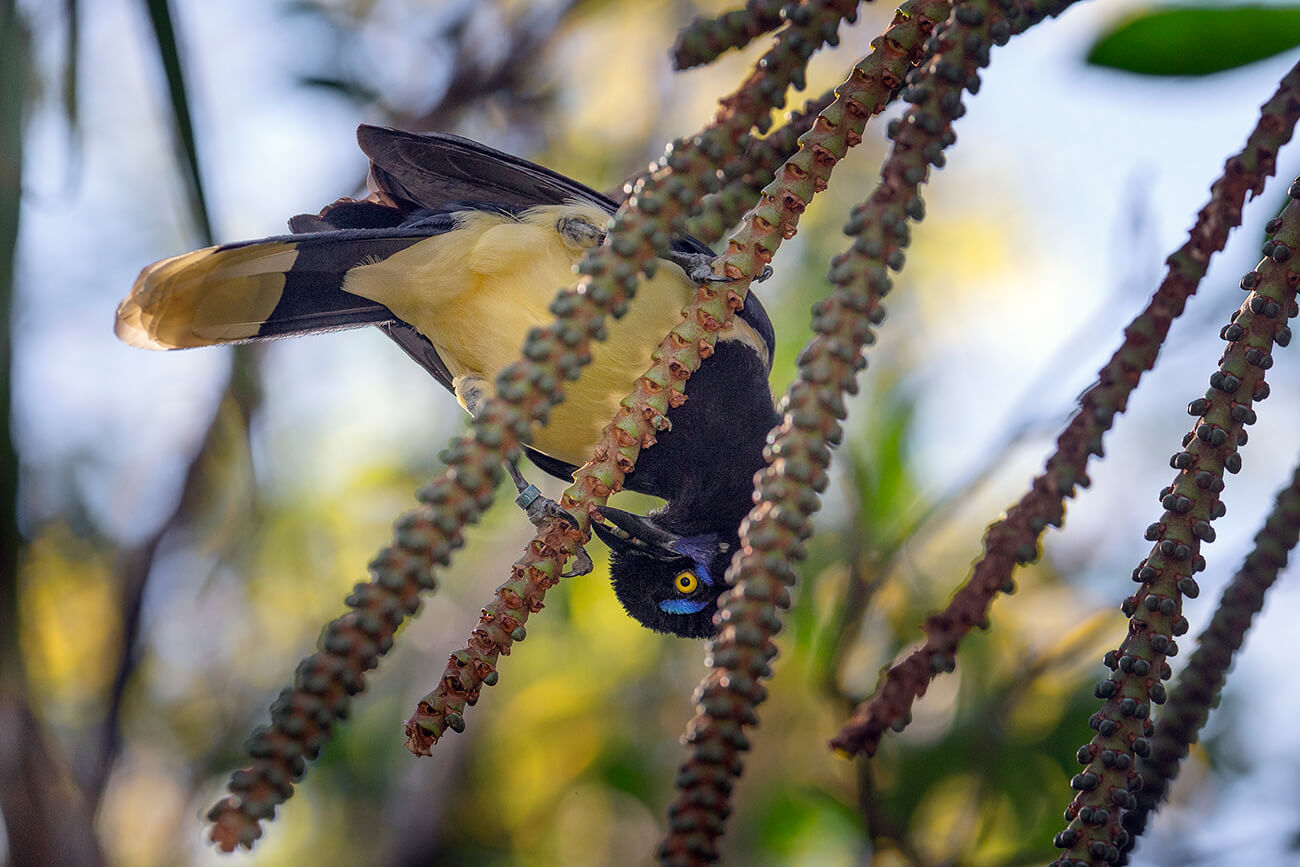
WHATEVER IT TAKES
Employing keen eyesight and any posture necessary, plush-crested jays go all-in while foraging.
Corvids are just about everywhere; and when you don’t see them, you still may hear them. In 1935, Belle Benchley, San Diego Zoo director, recognized and celebrated corvids for the unique birds they are. She wrote of our native California scrub jay: “To our own ears, it is a raucous note the blue jay utters, but to his mate and his children, it is apparently as lovely and as musical as the voice of the meadowlark or the song sparrow. It has its shades of meaning, its love song, and its lullaby.” The distinctive, loud voices of corvids are part of our world…and hopefully will be for a long time to come.

